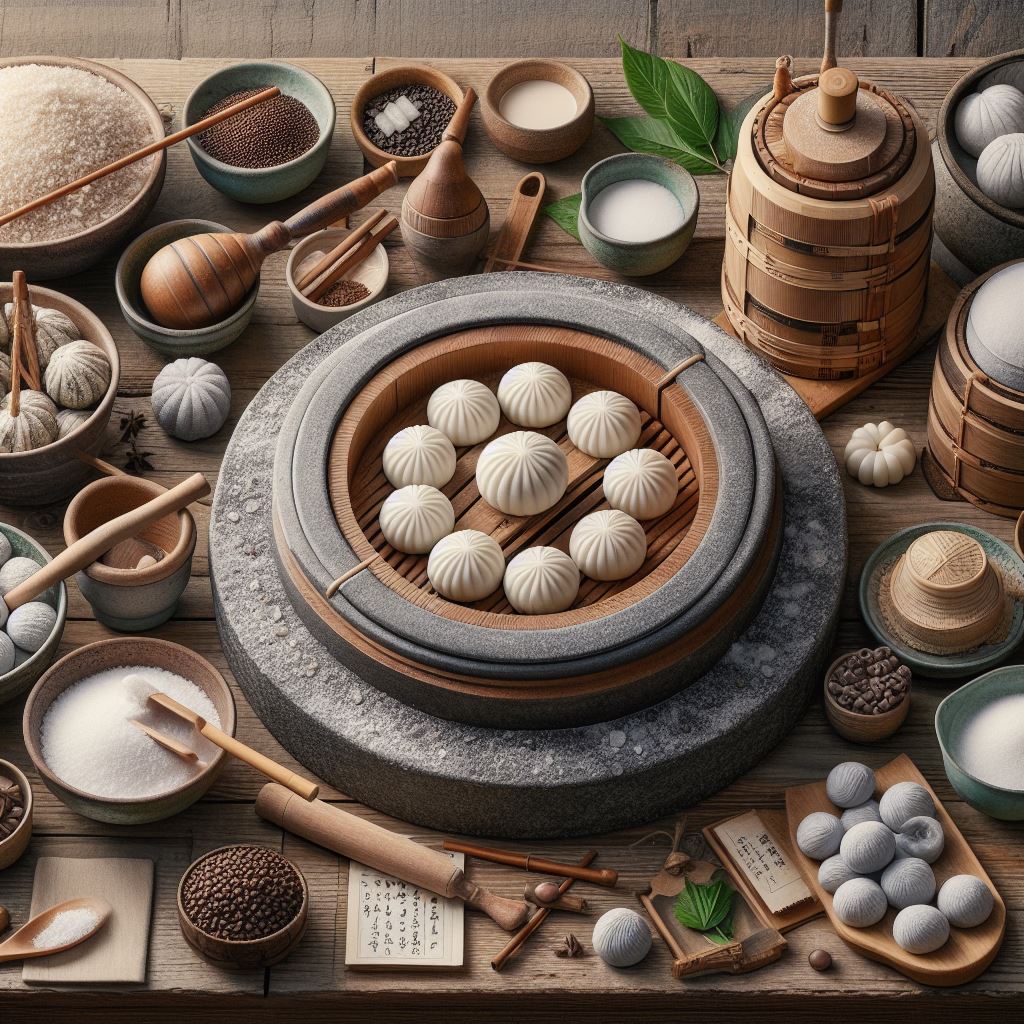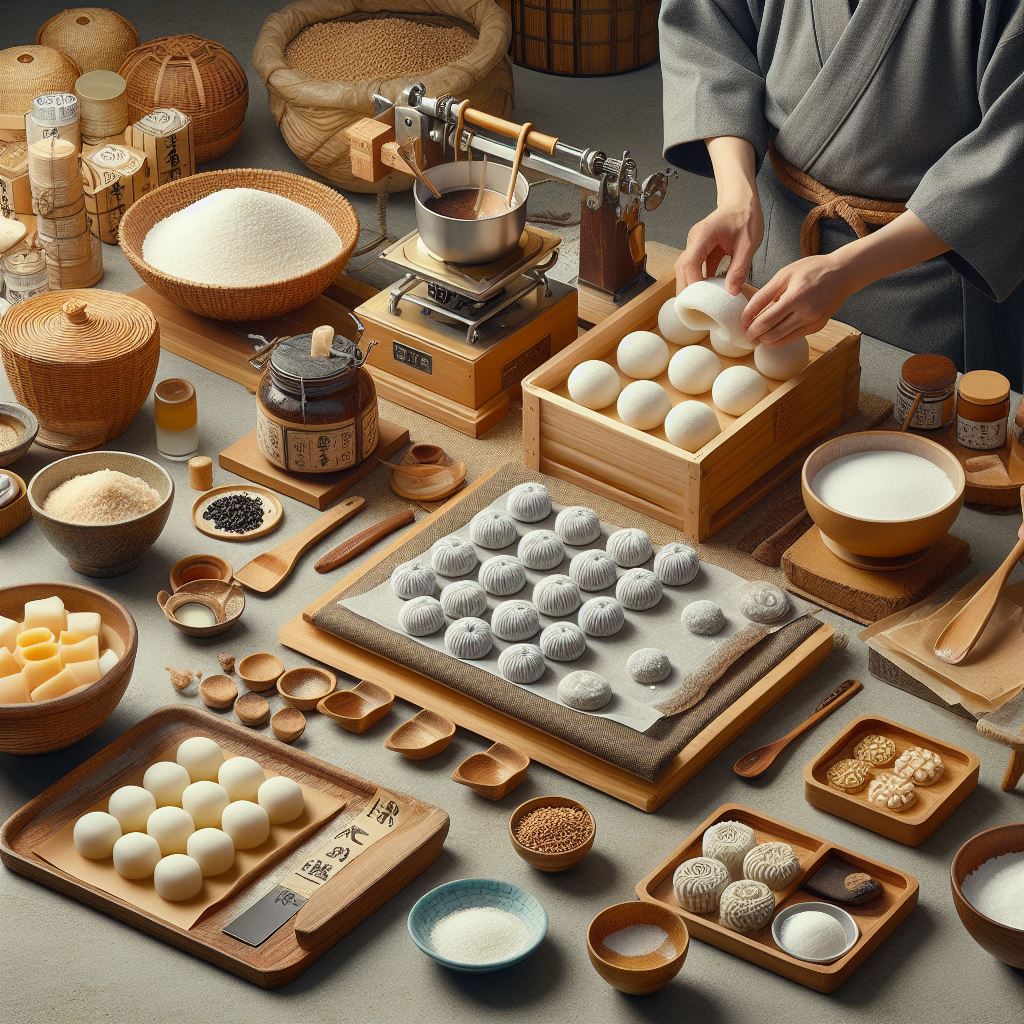日本甜食大福的歷史和製作過程
日本甜食大福的歷史和製作過程
大福是日本傳統的甜食之一,其歷史可以追溯到江戶時代。是一種用糯米製成的麻糬,填充有甜餡。近年來在日本逐漸普及,成為家喻戶曉的甜食。主要填充紅豆餡,並且經常作為茶點食用。現在的大福種類變得更加多樣化,填餡從傳統的紅豆餡(餡子)擴展到草莓、抹茶、芝麻、奶油等各種口味。冰淇淋大福等創新品種也在國際市場上廣受歡迎。
製作大福的過程雖然看似簡單,但實際上需要一定的技巧和經驗。以下是製作大福的基本步驟:
材料:糯米粉(或糯米)、砂糖、水、填餡(如紅豆餡、草莓、抹茶餡等)、片栗粉(防止粘連)。
之後準備糯米粉糊後將糯米粉和砂糖混合均勻,然後逐漸加入水,攪拌至無顆粒的糊狀。將糯米粉糊倒入蒸鍋中,用中火蒸煮約20分鐘,直到糯米糊變得透明且粘稠。將蒸好的糯米糊倒在撒有片栗粉的工作臺上,用手搓揉至光滑且有彈性。此步驟有助於增強糯米糰的粘性和延展性。
將糯米糰分割成適當大小的小塊,每塊約為30-50克,取決於所需大福的大小。
將分割好的糯米糰壓平,在中央放入適量的填餡(如紅豆餡或草莓)。將糯米糰四周向中央捏合,將餡料包裹在內,確保包裹緊密且無裂縫。
將包好的大福輕輕搓圓,使其形狀均勻美觀。根據需要,可以在大福表面撒上一些片栗粉,防止粘連並增加美觀。將製作好的大福放置片刻,讓其稍微冷卻並定型。最好在製作後當天食用,若需保存,可用保鮮膜包好,放置在陰涼處或冷藏保存,但冷藏後口感可能會變硬。
大福作為日本傳統甜食,具有悠久的歷史和豐富的文化內涵。從最初的簡單餡料到現代的多樣化口味,大福的製作技藝在不斷演進與創新。通過上述製作過程,可以了解這種美味甜食背後的工藝與心血,體驗到製作和品嚐大福的樂趣。
The History and Production Process of Japanese Sweets: Daifuku
Daifuku (大福) is one of Japan's traditional sweets, with a history that dates back to the Edo period. It is a type of mochi made from glutinous rice and filled with a sweet filling. In recent years, Daifuku has become increasingly popular in Japan, becoming a well-known and beloved confection. Traditionally, it is filled with sweet red bean paste and often enjoyed as a tea snack. Today, the variety of Daifuku has expanded significantly, with fillings ranging from traditional red bean paste (anko) to strawberry, matcha, sesame, and cream. Innovative varieties such as ice cream Daifuku have also gained widespread popularity in international markets.
The Production Process of Daifuku
The process of making Daifuku, although seemingly simple, requires a certain level of skill and experience. Here are the basic steps to make Daifuku:
Ingredients:
Glutinous rice flour (or glutinous rice)
Sugar
Water
Filling (such as red bean paste, strawberry, matcha paste, etc.)
Potato starch (to prevent sticking)
Instructions:
Prepare the Mochi Dough:
Mix the glutinous rice flour and sugar evenly.
Gradually add water to the mixture, stirring until it forms a smooth batter without lumps.
Pour the batter into a steaming tray and steam over medium heat for about 20 minutes, until the dough becomes translucent and sticky.
Knead the Dough:
Transfer the steamed mochi dough onto a work surface dusted with potato starch.
Knead the dough by hand until it becomes smooth and elastic. This step helps enhance the dough’s stickiness and stretchability.
Divide the Dough:
Divide the dough into small pieces, each weighing about 30-50 grams, depending on the desired size of the Daifuku.
Fill the Dough:
Flatten each piece of dough and place a portion of filling in the center (e.g., red bean paste or a strawberry).
Pinch the edges of the dough towards the center to enclose the filling, ensuring the filling is completely sealed inside with no cracks.
Shape the Daifuku:
Gently roll the filled Daifuku into a ball to achieve a uniform and attractive shape.
If needed, dust the surface of the Daifuku with a little more potato starch to prevent sticking and to enhance appearance.
Cool and Set:
Allow the prepared Daifuku to sit for a while to cool down and set. It is best enjoyed on the same day it is made. If storage is necessary, wrap each Daifuku in plastic wrap and store it in a cool place or refrigerate it. Note that refrigeration may cause the texture to harden.
Daifuku, as a traditional Japanese sweet, carries a rich history and cultural significance. From its initial simple fillings to the modern-day diverse flavors, the craftsmanship of making Daifuku continues to evolve and innovate. By following the production process outlined above, one can appreciate the artistry and effort behind this delicious treat and enjoy the experience of making and tasting Daifuku.




照片:DALLE3
- 1
- 2
- 3
- 4
